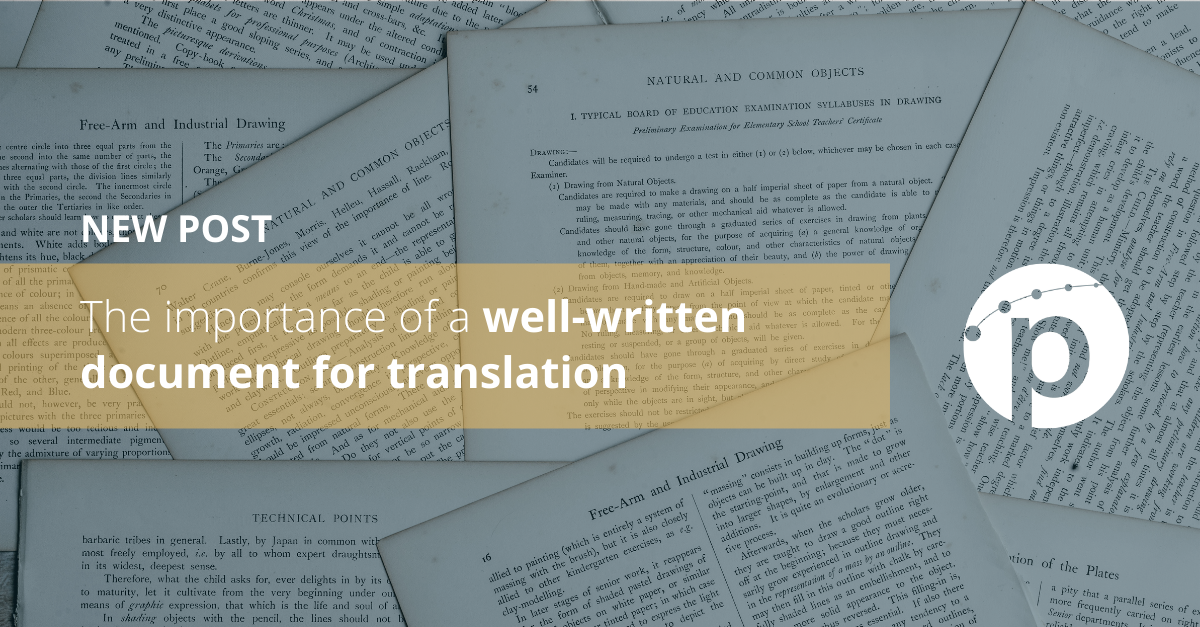by Garth Hedenskog and Manuel Herranz
Let’s see if we can make your life easier by going through a few steps to improve your next translation experience!! If you are a newbie to the translation arena, we recommend to use a good translation agency with a proven track record who can provide references. There are thousands of translation companies around so you will be spoilt for choice. All will promise you the world but be careful, some agencies will forget all about you once the sale is made.
What is the foundation of a good, professional translation? Undoubtedly, a good translation team and trained linguists of course. But even the best translators will have a bad time if the foundation is weak: a good source file. To say that a translation read better than the original source file has become a kind of joke in the translation industry.
What we call a source file in the industry is basically the original file of the work you need to be translated. Source files come in a wide range of wonderful formats and the most usual are: all xml-based formats (which include all Microsoft Office formats nowadays), all formats compatible with Tikal including DTP programs such as: InDesign, Frame Maker, and older QuarkXPress, PageMaker, software localization formats such as .po, Robohelp, etc.
The translation industry is always under enormous pressure to meet tight deadlines while maintaining the highest quality translation possible. As our clients work in fast paced high pressure environments, translation does at times become an afterthought. An example: “Hey John, have you finished that presentation for the German bid which is due tomorrow?” “Yes finally, but wait, we still need to have it Translated into German!!” - does it sound familiar? This I’m sure you can relate to if you deal with international clients or international offices.
However, this is not a problem faced by private industry, individuals or smaller companies. As we witness a true data deluge and a torrent of data being published online every day (a lot of it in translation), large companies have published to write clearly in order to facilitate the translation process. Organizations such as the European Union have published guidelines to make translation as smooth as possible. In its Writing for Translation booklet, published by the Translation Centre for the Bodies of the European Union recommends, among other things that authors should help translators by
-
Emphasizing what is important (by using summaries, explanatory headings and limiting each paragraphs to one idea only)
-
Showing a logical train of thought (by using connectors and linking each sentence to the next)
-
Avoiding ambiguities and long sentences
-
Using lists when numbering issues
-
Avoiding empty verbs and the passive voice whenever possible
-
Being coherent in the use of terminology, particularly when dealing with technical terms
-
Avoiding very culturally-specific expressions when addressing an international audience
-
Likewise, avoiding professional jargon, fashionable words and abbreviations and acronyms

Sometimes, so much time is spent on creating a beautiful, well-written document for translation that not enough time is scheduled to the actual translation − with disastrous consequences. And the opposite can be very true as well: a rushed, unchecked document that does not follow the above recommendations is sent to translators, who only end up recreating or increasing a confused line of thought. The secret is to get a good balance. After all, there is unfortunately only 24 hours in a day! On average a good translator will translate about 2000 – 3000 words a day depending on how familiar he/she is with the subject field. Whilst machine translation as a production aid has increased those figures, that first version will need to be proofread or reviewed (review is comparing the source and target files, proofread is just checking the translation). DTP or formatting work takes places afterwards, typically followed by a final pre-publishing (pre-press) QA process.
We always recommend to translate from the ORIGINAL language and not a translation. We all know the game Chinese whispers (or telephone game in the US). As the source always changes, the final message will not always be a reliable reflection on the original message.
If your message isn’t clear in the original then it is going to be impossible to get a clear message from the translation. Without getting in the argument of translation being an art or a science, planning and guidelines will always help when it comes to getting a quality service.
Now that we have explained a few points to improve your translation experiences, we recommend further reading for sure-fire ways to have a disastrous translation experience and result:
Enjoy translating!



